Psychopomps exhibition by Polly Morgan, London
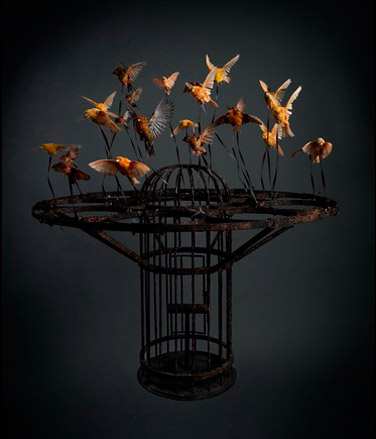
From a giant orb made from disembodied crows' wings to a suspended human ribcage with a flaming red bird resembling its heart, Polly Morgan's macabre sculptures take on a strange, fantastical beauty in the dim light of the Haunch of Venison's Mezzanine Gallery.
The taxidermist's latest body of work - on show until 25th September - marks a change in aesthetic and scale from the pieces that first caught the eyes of Banksy and Damien Hirst several years ago, and set her career in motion. The curious charm of the rats in champagne glasses and rabbits curled up on top hats, has been swapped with works that are bolder, more emphatically sculptural, larger and, this time, airborne. Central to the show is a burnt out cage, suspended in the air by a flock of finches.
'Psychopomps' is a Greek word that refers to a conductor of souls to the other world, like Hermes or Charon. It's perhaps a bizarre title for an artist who, in the monograph that accompanies the show, says of the creatures she uses: 'The actual body is discarded. I have nothing to do with its spirit. The animals in my freezer are my raw materials, like paint to a painter.' But, she does give these animals - all of which have died from natural or unpreventable causes - life after death, albeit in an extraordinary new guise.
'I wanted to make an organic whole that looked uncannily real,' Morgan says of the mass of pigeon wings that make up 'Blue Fever'. 'I looked at Eadweard Muybridge's time-lapse images of birds in flight and decided to make the different strata of wings in my sculpture mimic these stages, so that the objects seemed to have a pulse.'
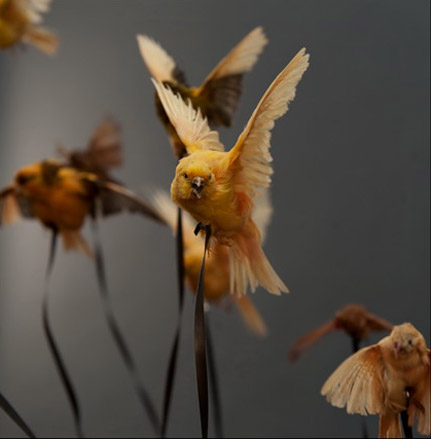
In ’Systemic Inflammation’, flame-coloured finches carry their cage. courtesy of Polly Morgan and Haunch of Venison
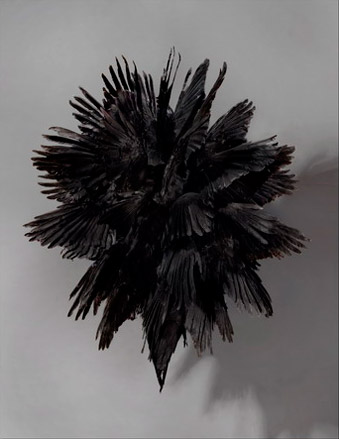
’Black Fever’ by Polly Morgan, 2010. courtesy of Polly Morgan and Haunch of Venison
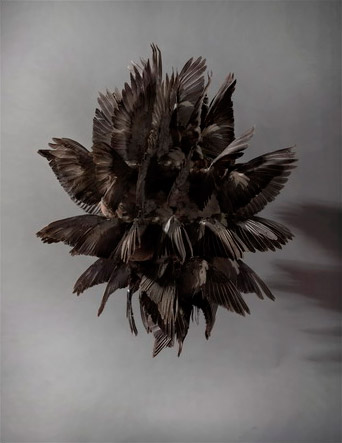
’Blue Fever’ by Polly Morgan, 2010. courtesy of Polly Morgan and Haunch of Venison
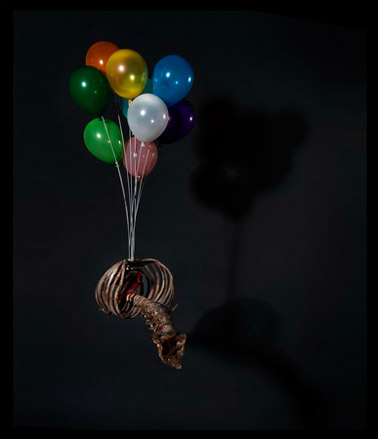
’Atrial Flutter’ by Polly Morgan, 2010. courtesy of Polly Morgan and Haunch of Venison
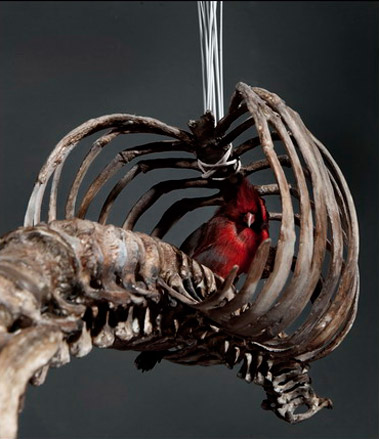
For ’Atrial Flutter’, Morgan has introduced a human body part - the ribcage - for the first time. courtesy of Polly Morgan and Haunch of Venison
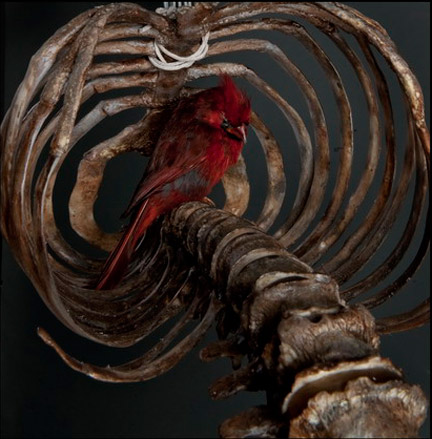
Inside the ribcage is a bright red cardinal. courtesy of Polly Morgan and Haunch of Venison
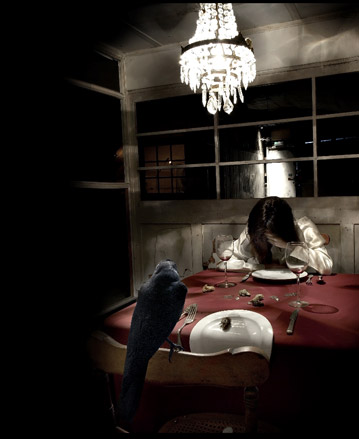
’Former Things’ by Polly Morgan, 2007, from the monograph on the artist that accompanies the show. courtesy of Polly Morgan and Haunch of Venison
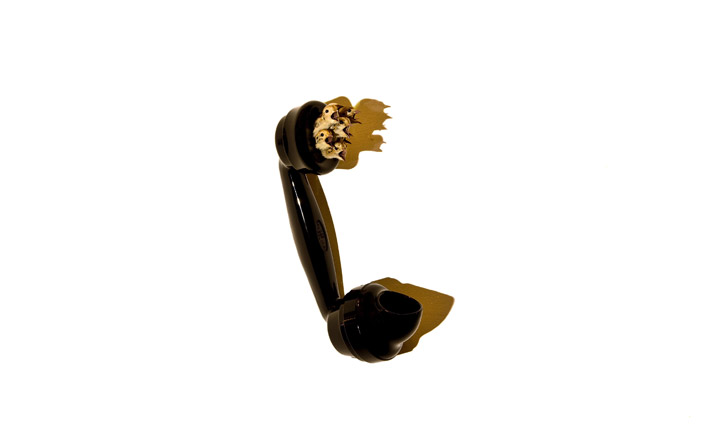
’Receiver’ by Polly Morgan, 2009, from the monograph on the artist that accompanies the show. courtesy of Polly Morgan and Haunch of Venison
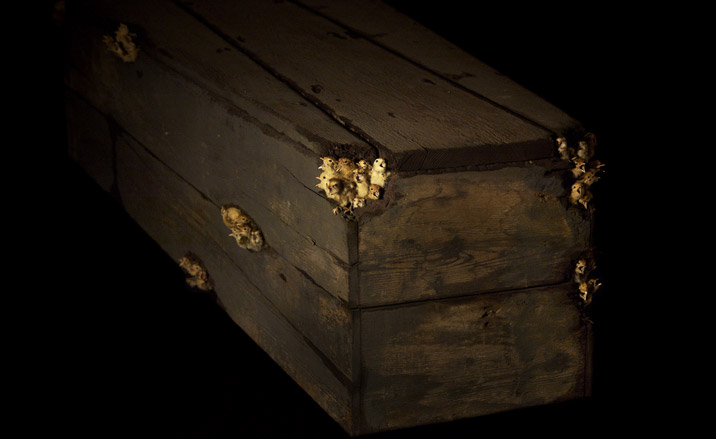
’Carrion Call’ by Polly Morgan, 2009, from the monograph on the artist that accompanies the show. courtesy of Polly Morgan and Haunch of Venison
ADDRESS
Haunch of Venison
6 Burlington Gardens
London W1S3ET
Receive our daily digest of inspiration, escapism and design stories from around the world direct to your inbox.
Malaika Byng is an editor, writer and consultant covering everything from architecture, design and ecology to art and craft. She was online editor for Wallpaper* magazine for three years and more recently editor of Crafts magazine, until she decided to go freelance in 2022. Based in London, she now writes for the Financial Times, Metropolis, Kinfolk and The Plant, among others.
-
 Meet Forefront, a cultural platform redefining the relationship between art and architecture
Meet Forefront, a cultural platform redefining the relationship between art and architectureForefront co-founder Dicle Guntas, managing director of developer HGG, tells us about the exciting new initiative and its debut exhibition, a show of lumino-kinetic sculptures in London
-
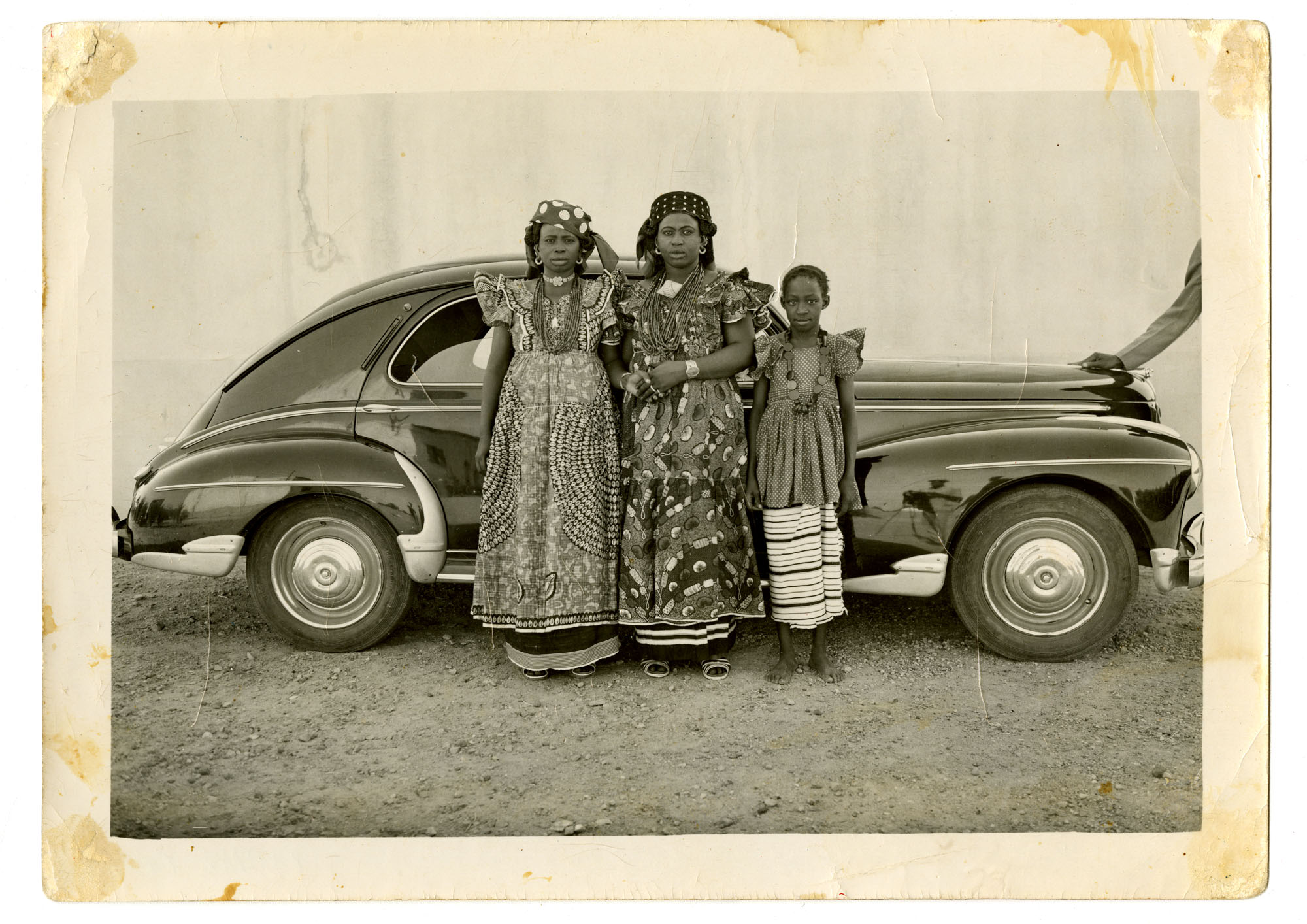 Inside the work of photographer Seydou Keïta, who captured portraits across West Africa
Inside the work of photographer Seydou Keïta, who captured portraits across West Africa‘Seydou Keïta: A Tactile Lens’, an exhibition at the Brooklyn Museum, New York, celebrates the 20th-century photographer
-
 Park Hyatt takes Kuala Lumpur to new heights
Park Hyatt takes Kuala Lumpur to new heightsMore than a decade in the making, Malaysia’s first Park Hyatt floats between levels 75 and 114 of Asia Pacific’s tallest tower, redefining intimacy in the sky